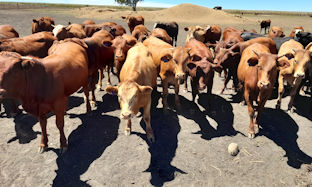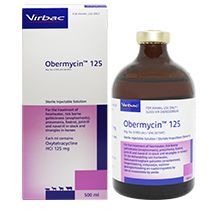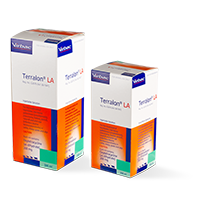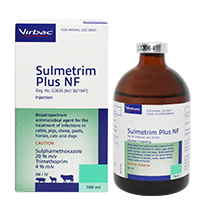
Pneumonia in Cattle
Bovine respiratory disease (BRD) is a condition that affects cattle of all ages. The condition can account for more than 40% of mortalities in feedlots. The stressful conditions in feedlots and dairies are ideal for the development of this condition. The bacterium Mannheimia (previously Pasteurella) haemolytica is a normal inhabitant of the upper respiratory system of cattle, but under the wrong circumstances it becomes one of the leading contributors to BRD or “Shipping Fever”.
Causes
Cattle have small lung interface areas in relation to their body weight, so they do not cope well when they contract lung infections. As such, the mortality rate associated with pneumonia in cattle is high. In feedlot and intensive dairy conditions, microbes are easily transmitted amongst animals. Animals can easily contract pneumonia when breathing air near an infected animal. In these intensive animal operations the immunity of the animals are often depressed. This presents the opportunity for respiratory viral infections caused by parainfluenza type 3 (PI3), bovine viral diarrhoea (BVD), bovine respiratory syncytial virus (BRSV), or infectious bovine rhinotracheitis (IBR) to penetrate into the upper respiratory tissues and get a foothold. Once the integrity of the upper respiratory system of the animal is compromised, Mannheimia haemolytica will opportunistically follow the viruses into the respiratory tissues and start spreading at an alarming rate. If affected animals are not identified early Mannheimia will quickly spread down the respiratory system into the lungs and cause significant damage. Inflammation which accompanies respiratory infections affects the animal`s appetite and ability to breath and the animal is plunged into a downward spiral.
Management factors that may contribute towards the development of BRD are: Transportation which is stressful and can cause dehydration and electrolyte disturbances, dusty conditions, carbohydrate-rich feeds, exposure to noxious gases (e.g. exhaust gases during transport), extreme temperature fluctuations, poor diets, overcrowding, handling and exhaustion.
Symptoms
Early signs:
- The animal lags behind others
- Fever
- Loss of appetite
- Depression
Signs a day or two after infection:
- Rapid / difficult breathing
- Coughing
Advanced signs: (By this time salvaging is extremely difficult)
- Tongue projection
- Open-mouthed breathing
- Weight loss
Prevention
- NB Vaccination against the viruses that initiate the disease. In the case of feedlot calves, this must preferably be done on the farm of origin BEFORE animals are transported.
- Backgrounding feedlot calves (a rest period on the veld after being transported, and before being put into feedlot pens)
- Prevent overcrowding.
- Placement of animals of the same size, gender, and type in same camp or pens.
- Keeping newcomers separate.
- Mixing water and molasses with dry rations to minimise dust.
- Controlling dust with sprinkler systems.
- Supplements to build the immune system.
The use of vaccines together with good management will help prevent BRD
Treatment
Prevention is always best, and supports the prudent use of antibiotics.
Animals that fall ill in spite of all possible preventative measures, must be identified as early as possible, and treatment done for long enough, at high enough doses. Early treatment is key to chances of recovery.
Get in touch for information on supportive supplements, vaccines and emergency applications, to prevent pneumonia in the herd.




